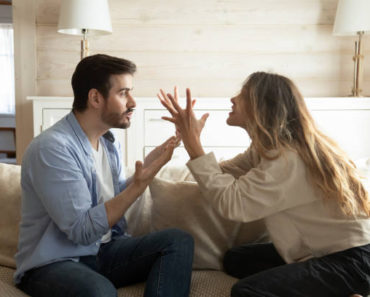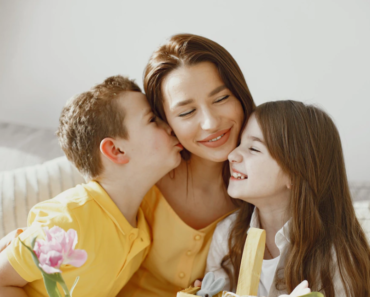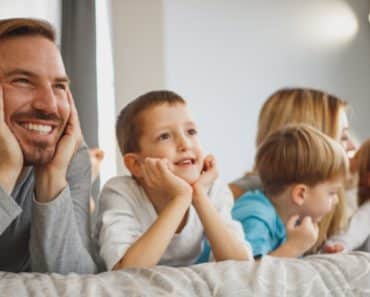Contents
- 1 Unlocking Emotional Healing: The Power of Art Therapy for Stepparents
- 2 The Benefits of Art Therapy for Stepparents
- 2.1 How can art therapy help stepparents build stronger bonds with their stepchildren?
- 2.2 What are some creative art therapy techniques that can be used to address the unique challenges faced by stepparents?
- 2.3 How can art therapy serve as a tool for communication and expression within blended families?
- 2.4 Related Posts

Introducing “Art Therapy: A Healing Journey for Stepparents”. Discover the transformative power of art therapy as we explore how it can positively impact the lives of stepparents. Join us on this creative and cathartic journey towards self-expression and personal growth. Explore how art can be a powerful tool in navigating the complexities of blending families.
Unlocking Emotional Healing: The Power of Art Therapy for Stepparents
Unlocking Emotional Healing: The Power of Art Therapy for Stepparents
Stepparenting can be a challenging journey, filled with a mix of emotions and expectations. It’s not uncommon for stepparents to experience feelings of frustration, confusion, or even resentment as they navigate their role within the family dynamic. However, art therapy offers a powerful tool for unlocking emotional healing in stepfamilies.
Through various art forms such as painting, drawing, sculpting, or even journaling, stepparents can express and explore their emotions in a safe and non-judgmental environment. Art therapy allows them to externalize their inner struggles, providing an outlet for release and self-discovery. By expressing their emotions visually, stepparents can gain a deeper understanding of themselves and their unique experiences within the stepfamily.
Moreover, art therapy encourages communication between family members. Through the creation and sharing of their artwork, stepparents can initiate conversations about their feelings and experiences. This process promotes open dialogue, fosters empathy, and strengthens the bond between stepparents and stepchildren.
Art therapy also offers a platform for problem-solving and conflict resolution in stepfamilies. It provides a creative space where stepparents can work through challenges and discover innovative solutions. Creating art together as a family can be a collaborative and bonding experience, enabling everyone to contribute and find common ground.
Additionally, art therapy promotes self-care for stepparents. Taking the time to engage in artistic activities allows them to focus on their own well-being, replenish their emotional energy, and reduce stress. It offers a way to disconnect from the complexities of stepfamily dynamics and connect with oneself on a deeper level.
In conclusion, the power of art therapy for stepparents lies in its ability to unlock emotional healing. By engaging in creative expression, stepparents can gain insight into their emotions, foster communication within the family, find solutions to challenges, and prioritize self-care. As a valuable tool in the stepfamily journey, art therapy has the potential to strengthen relationships and create a more harmonious and supportive blended family environment.
The Benefits of Art Therapy for Stepparents
1. Promoting Self-Expression and Emotional Release
Art therapy provides a safe and non-verbal outlet for stepparents to express their emotions, especially those that may be difficult to communicate verbally. Through various art forms such as painting, drawing, or sculpting, stepparents can channel their feelings into a creative process, allowing them to release and explore complex emotions.
2. Strengthening the Bond with Stepchildren
Engaging in art therapy activities together can help stepparents and stepchildren build a stronger bond. By creating artwork side by side, they can connect on an emotional and creative level, fostering a deeper understanding and empathy for each other. This shared experience can also serve as a tool for communication and bridge potential gaps between the stepparent and stepchild.
3. Enhancing Problem-Solving Skills and Coping Mechanisms
Art therapy encourages stepparents to think creatively and find new ways to approach challenges they may encounter in their blended family. The process of creating art can stimulate problem-solving skills and promote the development of coping mechanisms. Stepparents can learn to reflect on their artwork and use it as a platform for exploring solutions and managing stressors within their role as a stepparent.
How can art therapy help stepparents build stronger bonds with their stepchildren?
Art therapy can be a valuable tool for stepparents to build stronger bonds with their stepchildren. The process of creating art allows individuals to express themselves non-verbally, often tapping into emotions and experiences that may be difficult to articulate verbally. This can be particularly helpful in the context of blended families, where there may be complex emotions and relationships involved.
Art therapy provides a safe space for stepparents and stepchildren to engage in a shared creative experience. Through art-making, both parties can explore and express their thoughts and feelings about the stepfamily dynamic, as well as any challenges or conflicts they may be facing. This can help foster open communication and understanding between stepparents and stepchildren.
Additionally, art therapy encourages collaboration and teamwork. Stepparents and stepchildren can work side by side on art projects, sharing ideas and supporting each other through the creative process. This collaborative experience can create a sense of unity and strengthen the bond between them.
Art therapy also allows for self-reflection. As stepparents and stepchildren engage in art-making, they may gain insights into their own emotions and experiences. This self-awareness can lead to personal growth and a better understanding of one’s role within the stepfamily.
Overall, art therapy offers a unique and effective way for stepparents and stepchildren to connect on a deeper level. By engaging in this creative process together, they can build trust, improve communication, and strengthen their bond in a supportive and non-threatening environment.
What are some creative art therapy techniques that can be used to address the unique challenges faced by stepparents?
Art therapy techniques can be a powerful tool for stepparents to address the unique challenges they face. Here are some creative art therapy techniques that can be used:
1. Collage Therapy: Encourage stepparents to create collages using various images and materials to represent their blended family dynamics. This exercise allows them to visually express their emotions, relationships, and aspirations within the family unit.
2. Mask Making: Engage stepparents in the process of creating masks that symbolize their different roles and identities within the blended family. Masks can represent the masks they wear in public versus private settings, or the different personas they assume as stepparents and biological parents.
3. Family Tree Art: Ask stepparents to create a visual representation of their blended family tree. This can include their own children, stepchildren, ex-spouses, and other important individuals. It allows them to explore and navigate the complexities of their family dynamics while providing a sense of belonging and connection.
4. Journaling with Art: Encourage stepparents to combine writing with art by incorporating drawings, paintings, or sketches in their journal entries. This integrated approach helps them process their thoughts and emotions, reflect on their experiences, and identify areas of growth or challenges in their role as a stepparent.
5. Group Collage: Facilitate a group art therapy session with other stepparents. Provide magazines, scissors, glue, and large poster boards. Each participant can contribute images and words that represent their individual experiences as stepparents. Working collaboratively on a shared collage can foster a sense of community, support, and validation.
Remember, art therapy techniques should be facilitated by a trained professional who can guide stepparents through the process and help them explore and process their emotions effectively.
How can art therapy serve as a tool for communication and expression within blended families?
Art therapy can serve as a valuable tool for communication and expression within blended families, including the Stepparent dynamic. Blended families often face unique challenges in terms of building relationships and creating a sense of unity among family members who may come from different backgrounds. Art therapy provides a creative and non-verbal outlet for family members to express themselves and communicate their thoughts and emotions.
One way art therapy can benefit Stepparents is by allowing them to explore and express their feelings about their role in the family. Stepparents may experience a range of emotions, including love, frustration, and even guilt. Through art therapy, they can visually depict and process these emotions in a safe and non-judgmental environment. This can lead to increased self-awareness and understanding, which in turn can facilitate healthier and more effective communication with their stepchildren and partner.
Similarly, art therapy can help stepchildren navigate their own emotions and experiences within the blended family. They may have mixed feelings towards their Stepparent, such as loyalty conflicts or a sense of loss related to their biological parent. Engaging in art therapy allows them to explore and communicate these complex emotions, which may be difficult to express through words alone.
Art therapy can also foster a sense of togetherness and bonding within the blended family. By engaging in collaborative art projects, such as creating a family mural or participating in a group painting session, family members can work together towards a common goal. This shared creative experience can help build bridges and strengthen the connections between Stepparents, stepchildren, and other members of the blended family.
In summary, art therapy can be a powerful tool for communication and expression within blended families. By providing a creative and non-verbal outlet, it allows family members, including Stepparents, to explore and process their feelings, navigate complex emotions, and build stronger relationships within the blended family unit.
In conclusion, art therapy proves to be a valuable and effective tool for stepparents navigating the complexities of blended families. Through creative expression and the exploration of emotions, it allows these individuals to process their own feelings and nurture their relationships with their stepchildren. Moreover, art therapy offers a safe and nonverbal avenue for communication and understanding between stepparents and stepchildren, promoting empathy and connection. By incorporating art therapy techniques into their relationships, stepparents can enhance bonding, reduce conflict, and create a harmonious blended family dynamic. Embracing the power of art to heal and strengthen relationships brings immense potential for growth and happiness in the stepparenting journey.







